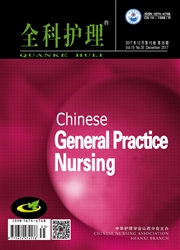

 中文摘要:
中文摘要:
目的:探讨幸福感提升训练合并安非他酮对抑郁症患者的疗效及生活质量的影响。方法:将符合中国精神障碍分类与诊断标准第三版(CCMD-3)抑郁症诊断标准的患者92例,随机分为两组,一组患者给予幸福感提升训练合并安非他酮治疗(研究组);另一组患者单用安非他酮治疗(对照组)。5周后,采用汉密顿抑郁量表(HAMD)评定患者的疗效,用生活质量评定量表(QOL-100)评定患者的生活质量,并于1年后统计复发率及再评生活质量。结果:5周后研究组患者的HAMD及QOL-100总评分较对照组差异显著(P<0.05),1年后研究组患者的HAMD及QOL-100总评分较对照组有非常显著差异(P<0.01)。复发率研究组患者为6.5%,对照组患者为19.6%,两组患者比较差异非常显著(P<0.01)。结论:幸福感提升训练可提高抑郁症患者的疗效及生活质量,并能降低其复发率。
 英文摘要:
英文摘要:
Objective:Toexplore influences of happiness increase training withbupropion on curative effect and quality of life for patients with depression. Methods:92 cases with depression whowere consistentwith Chinese classification and diagnostic criteria of mental disorders-3 (CCMD-3) were randomly divided into two groups. One group was given happiness increase training with bupropi-on treatment ( study group) , while the other group was givenbupropion treatment( control group) . 5 weeks later, Hamilton depression scale (HAMD) was used to assess the efficacy, and quality of life scale (QOL-100) was used to assess quality of life. One year later, the recurrence rate was statistically analyzed and the quality of life was reevaluated. Results:5 weeks after the treatment, there were significant differences in the HAMD score and QOL-100total score between the two groups (P〈0. 05). One year after the treatment, there were very significant differences in the HAMD score and QOL-100total score between the two groups (P〈0. 01). The recurrence rates of study group and control group were 6. 5% and 19. 6%, respectively, and the difference was very significant (P〈0. 01). Con-clusions:Thehappiness increase training can improve the efficacy and quality of life for the patients with depression, and can reduce the recurrence rate.
 同期刊论文项目
同期刊论文项目
 同项目期刊论文
同项目期刊论文
 期刊信息
期刊信息
